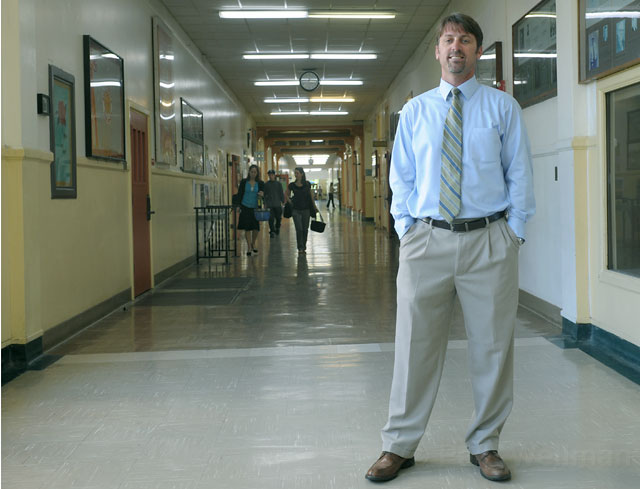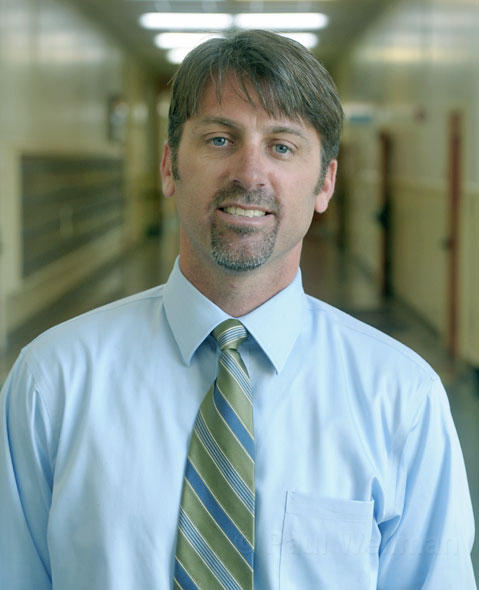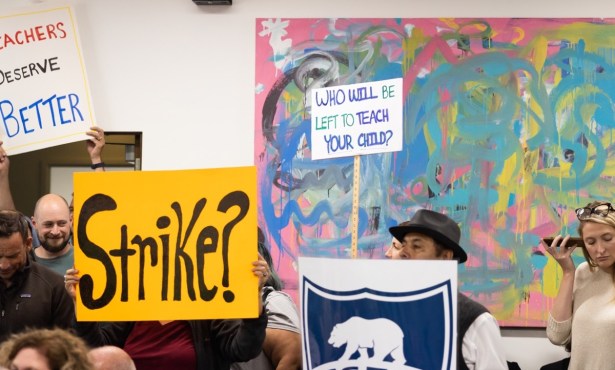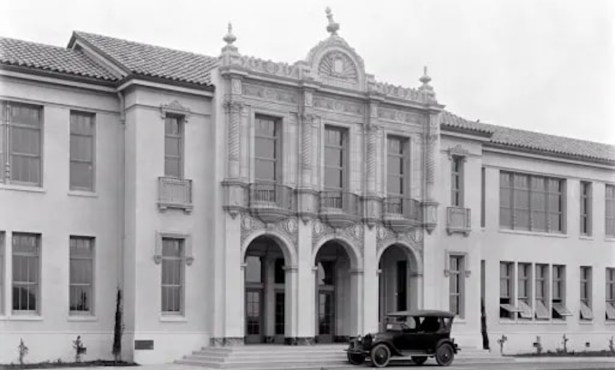Extreme Makeover: High School Edition
John Becchio Is the New Face of Santa Barbara High

It’s hard to find anyone who dislikes John Becchio, the principal of Santa Barbara Junior High who will be taking over the helm of Santa Barbara High School next year. Bob Kupiec, an active parent at the schools, said, “He’s the George Bailey of California. When they make the movie they’ll have to resurrect Frank Capra [to play Becchio].”
There’s no evidence that Becchio ever came close to committing suicide, as Jimmy Stewart’s character considered in It’s a Wonderful Life, but he does resemble a Hollywood film character more than, say, an actual human being. Blue-eyed, square-jawed, and athletic—a former shortstop at Arizona State—Becchio, 37, is on a meteoric rise through the ranks of the Santa Barbara School District.
When Becchio took over the principal position at the junior high, it was languishing in the third year of “program improvement,” a restructuring plan stipulated by the No Child Left Behind law for underperforming schools. Since then, Becchio and his staff have sharply raised test scores, transformed the school’s culture, and wooed parents from elementary districts who typically send their children to private secondary schools.
On the one hand, Kupiec’s invocation of Frank Capra is apt. Charismatic and engaging, Becchio says his style is to be “very visible and very approachable.” The bilingual principal even translates at school meetings for Spanish-speaking parents. On the other hand, Becchio did not turn the school around with inspiration alone, but instituted reforms aimed at gathering and acting on hard data.

He makes his teachers give their students assessment tests every two weeks, after which the instructors, who work in teams, analyze the results, figure out what kids aren’t understanding, and identify the students who are falling behind. This way, says Becchio, the curriculum can be “tightened” and teachers can intervene with the students who need extra help. At the same time teachers are assessing students, the administration is assessing teachers. Becchio and his assistant principals perform 40 observations every two weeks.
The transition wasn’t perfectly smooth. As Becchio put it, “People have left because the pressure is too big.” Math teacher Marc Fidel said, “He took us out of our comfort zones. It was a paradigm shift and some people initially balked.” Fidel added that the changes were worth it, and although work-intensive at first, they have made his job easier in the long run. “Even if people bristled, when we saw the climate of the school change and the test scores, we got on board,” said Fidel.
Despite all of this early success Becchio did not plan on becoming an educator when he returned to Santa Barbara after college. (He grew up in Carpinteria, but moved with his family to Arizona when he was 10.) He took a job as a youth services counselor at S.B. Junior High (SBJH) for the Council on Alcoholism and Drug Abuse in order to support himself, but planned on eventually attending either medical or physical therapy school. He enjoyed being around children so much, though, that he applied for an emergency credential and told then-principal Gerrie Fausett that he would teach any class available. And he did. Shop, health, phys ed, math.
“He was one of those people who could teach anything. One of the beauties of John Becchio is that you could put him in a classroom and he can do it,” said Fausett who saw potential in her protégé early on. She urged him to earn a degree in administration, a move he had not previously considered. But he followed the advice and when he finished his master’s program he took a job as assistant principal at La Colina before eventually rejoining SBJH.
There, aside from changing the instructional dynamic, he also sought to change the culture of the school. When he saw kids walking into the school without any supplies but a sheet of paper rolled up around a pencil, he decided that had to change. He no longer lets any children enter a classroom without a backpack and proper supplies, and personally runs interference as they enter the school building in the morning. The school purchased loaner bags for those who can’t afford them.
In an effort to make the junior high a more welcoming environment and to help bridge the conspicuous race/class divide among students, he instituted a WEB (Where Everybody Belongs) program at the suggestion of counselor Todd Fredeen. Each year eighth grade “ambassadors” are assigned 13 incoming students to help through the transition to junior high school. Every ambassador phones his or her charges before the school year even begins. “I bring a mindset that brings the students to the center,” said Becchio.
Ivy, a Santa Barbara High School sophomore, shared that when she was still a student at the junior high, John Becchio saved her from a bully who had been calling her unseemly names. He appeared out of nowhere, hauled the offender off to the office, and then, for good measure, made the bully’s mother attend school with him the next three days.
Becchio said he does not recall the specific incident, but does not doubt its veracity. He typically disciplines misbehaving students by asking their parents to come—if possible—to school with them. This way the children don’t miss class as they would have if they had been suspended. Plus, the embarrassment of toting a parent around school all day is far worse punishment than staying home.
When it comes to bullying and teasing, said Becchio, “I drop everything and deal with it.” When a father of a special needs student called Becchio with the suspicion that his son was being bullied during gym class, Becchio staged a two-day stakeout until he caught the accused bully slamming the child against a fence.
Students and teachers alike wonder whether the Bechio’s hands-on approach will work at the high school level. At first glance it seems like he brings the exact qualities the school needs. It is also in its third year of program improvement. The current principal, Mark Capritto, has a reputation for aloofness. He is known to correct students who greet him incorrectly as Mr. Capritto (instead of Dr. Capritto), commutes from Ventura County, and, according to teachers and students, doesn’t communicate well. Becchio, on the other hand, constantly interacts with his students. Sebastian, a freshman at Santa Barbara High and former SBJH student, said, “I liked the fact that he wandered the hallways. He checked things out. That’s what a principal is supposed to do.”
It won’t be so easy to “check things out” at the high school. Ivy, the student Becchio saved from bullying, said, “I can see him trying to fix everything. He probably doesn’t know what he’s getting himself into.” Students understand that the high school—merely by dint of its scale—poses challenges that a junior high doesn’t. Outgoing superintendant Brian Sarvis agrees. He likens running a high school to running a small city. Becchio will oversee twice as many grade levels, more courses, more schedules, almost 200 paid staff, 2,300 students (as opposed to 800), and three or four activities every night.
Eighth grade English teacher P. J. Carmean worries that Becchio will face the same dilemma President Obama did after he took office. He inspired the voters who elected him but has since been rendered prosaic by the rigors of the job. Specifically, Carmean—who taught at S.B. High for eight years with great success before the district moved her to SBJH for staffing and budgetary reason—worries that Becchio will have trouble addressing systemic problems such as moribund attendance and inadequate teacher collaboration.
Initially a bit apprehensive about her move, Carmean found the junior high “shockingly cordial” upon arrival. Becchio might not be as pleasantly surprised when he moves in the opposite direction, but he claims he’s ready for the challenge.



